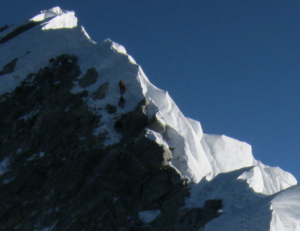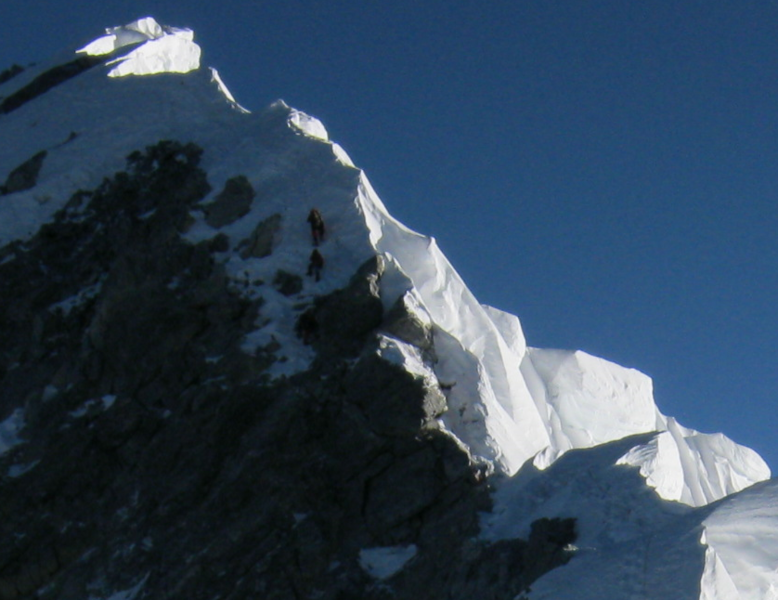Mount Everest is home to many weather stations that gather valuable high-altitude weather data, including the highest weather station on Earth, the Balcony Station, which sits at approximately 8,430 meters (27,657 feet) above sea level.
Installed by a team led by climate scientists Tom Matthews and Baker Perry in 2019, the weather station on Mount Everest’s Balcony is the highest weather station in the world, just a few hundred meters below Everest’s summit, the highest point on earth.

When the station was first assembled and bolted to the rock, it looked like an elaborate backyard antenna festooned with bird feeders and weathervanes. In reality, it was $30,000 for precision instruments designed to measure wind, humidity, temperature, solar radiation, and barometric pressure. Now, the mangled seven-foot-tall mast lay on its side, embedded in ice.
To lug the weather station to the top of the world had required parceling its pieces out among the members of their team. And among the coils of guy-wire, aluminum poles, and various scientific instruments, there were supposed to be two short sections of metal tubing that connect the wind sensors to the main structure.

The reason any of this was worth the effort, risk, and the cost is that only Mount Everest and a few of its Himalayan cousins are tall enough to reliably pierce the Sub-tropical Jet Stream—one of the narrow bands of powerful winds that circle the globe at high altitudes, influencing everything from storm tracks to agriculture growing seasons. For climate scientists, there are few more pressing phenomena to understand than the jet stream, and the weather station would provide scientists with an important new tool with which to gather data about it.
According to nationalgeographic















